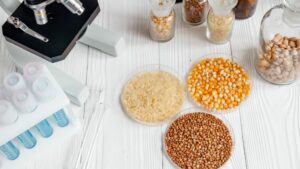If your company is thinking about entering the export market for the first time, there are several pieces of the puzzle that should be well planned out.
The U.S. seed export business is steadily growing, and it’s giving more seed companies the opportunity to test their wares in an international market.
According to the U.S. Department of Agriculture’s Foreign Agricultural Service, the value of U.S. seed exports has steadily risen since 2008, when companies moved nearly $1.17 billion in seed across borders. That number was $1.45 billion in 2013. That’s a 24 percent increase in five years, or nearly 5 percent each year.
On top of that, more and more countries are signing on to the International Plant Protection Convention — a multilateral international agreement administered by the Food and Agriculture Organization of the United Nations and recognized by the World Trade Organization as the only international standard setting body for plant health.
The treaty is designed to help protect cultivated and wild plants by preventing the spread of pests and diseases through international trade. Once these invasive diseases and pests take hold, it’s often impossible to rid them from a country.
In 2000, there were about 80 to 90 countries involved with the treaty, according to Ric Dunkle, American Seed Trade Association senior director of seed health and trade. Today, there are 182.
The treaty is not a requirement to be involved in international seed trade. But it gives countries science-based measures to help safeguard their cultivated and wild plants.
Dunkle says a major goal is to get countries on the same page in terms of phytosanitary requirements — the rules and requirements each country sets regarding disease and pests in order for a particular seed to enter the country.
“More countries are getting the capacity to manage phytosanitary requirements,” Dunkle says. “As we continue to work toward agreements of phytosanitary requirements based on science, I think it will open new markets.”
Getting Started
While the possibility of expanding markets sounds great, entering them is another story. The maze of rules and requirements that must be met to move seed across a border can be daunting. And even once those are mastered, there are no guarantees that anything will go smoothly.
“When you’re working internationally, just about anything can happen,” says Michael Perry, a U.S. Department of Agriculture Animal and Plant Health Inspection Service (APHIS) senior export specialist.
For a company that hasn’t dipped its toe into the export business, Perry recommends starting with the USDA APHIS’ Phytosanitary Export Database (PExD) System. The database contains phytosanitary requirements of U.S.-origin commodities to foreign countries.
In other words, it lays out each country’s known phytosanitary requirements for additional declarations, area freedom, testing, treatment, pest lists, inspections, etc., that must be met to import each type of seed into their country.
“Phytosanitary certificates are really the major thing you need to move seed around the world,” says Steve Cull, director of seed operations at Ball Horticultural Company.
The phytosanitary requirements can vary significantly from country to country and seed to seed. And looking them up requires entering their botanical names.
“Some countries are really sensitive to certain seeds,” Perry says. “Other countries may require no certificate, while some may require testing or field inspections. Every country is different.”
To export corn (Zea mays) to Brazil, for example, the shipment must be free of Prostephanus truncatus, a type of grain borer, and lab tests must be conducted to ensure the seed is free of Cercospora sorghi, a fungal plant pathogen, and Mycosphaerella zeae-maydis, a type of leaf blight. It must also be produced in a country known to be free of Striga, a parasitic plant that attacks plant roots. There are half a dozen more requirements just to get corn seed into Brazil.
Canada has different requirements for different states or U.S. territories for the importation of corn. For most, the country requires fumigations or steam treatments for European corn borer. But it also imposes additional declarations — that the seed was produced in an area free of European corn borer, that the seed was passed through a 1.25 centimeter screen to exclude large corn cob or stem fragments, and that the seed was treated in a manner approved by the Canadian Food Inspection Agency to control European corn borer.
Some countries will require similar phytosanitary certificates, as well as an import permit. Meanwhile, other countries will impose an outright ban on the importation of a particular type of seed without an import permit. China, for example, prohibits importation of corn without a permit.
Sometimes, it’s a matter of having federal authorities or ASTA staff working with the country to determine what they need to allow seed across their borders.
Exceptions are sometimes made for research purposes or if a new demand for the seed arises. “If something is prohibited, you can apply for an import permit, which supersedes known import requirements,” explains Perry.
Genetically modified seed poses its own hurdles. In general, a country either allows the importation of GMOs or doesn’t. The same sorts of testing and inspections would apply to GMO and non-GMO seeds alike.
Constant Change
Knowing the requirements listed in the PExD isn’t always enough. Perry stresses that while the database is constantly updated, it lists only the “known requirements” from each country.
A country could, for example, have a law going into effect in the fall that requires a particular inspection or test that isn’t listed in the database yet. Or the country might not have communicated a new requirement yet.
Dunkle has even seen cases of new phytosanitary requirements being adopted while a shipment was in transit, causing it to be rejected upon arrival.
“A country’s phytosanitary regulations constantly change and are constantly updated,” Dunkle says. “A lot of time we have to ask APHIS to intervene and allow that seed to go through under the grandfathered requirements.”
Dunkle says it’s also important to be ahead of the game. Some of the requirements a country could have might not be possible to meet with seed that’s already harvested. “If they base a phytosanitary certificate on a field inspection and your seed is already harvested, you can’t do that,” Dunkle explains.
To ensure you’re not tripped up by unforeseen requirements, it’s important to work through your local USDA representatives. Not only will they be able to make sure all requirements are met, but they can do or set up necessary inspections and provide resources for seed testing and additional declarations.
“We want a good relationship with these people,” Cull says. “If we need an additional declaration to get our product into another country, they can get those declarations.”
Dunkle adds that making connections on the receiving end can be vital for exporting. “If companies are contemplating getting into the business of exporting seed, they should study the phytosanitary requirements and find allies in those countries to help them out, like seed associations in those countries,” he says.
Those contacts can also help navigate any other taxes or fees that might be levied from other governmental agencies.
A company should register with APHIS’ Phytosanitary Certificate Issuance and Tracking System (PCIT), a web-based tool that allows exporters to apply for phytosanitary certificates online, schedule inspections and print their certificates. Registered users communicate through the system with county, state and federal officials who help with the details and requirements to move seed across borders.
Exporters should also be aware that any import permits issued are for one specific shipment or for a set amount of time. Any future business will require applying for new permits.
Re-exports Add a New Dynamic
Re-exportation adds a wrinkle to the situation.
The key is to pay attention to where the seed is originating and where it will end up. Getting seed from Chile to the United States might be fairly straightforward. In fact, getting seed into the United States usually requires little more than a phytosanitary certificate.
“The U.S. is probably one of the easiest countries to import seed into in the world. Most seed just needs a phytosanitary certificate saying it’s free from disease and pests. Usually seed is subjected to a visual inspection and released,” Dunkle says. “But there’s usually a lot of problems with seeds for re-export.”
Sending that same seed on to China could cause problems if China wasn’t factored into the equation back in Chile. China could have a requirement that the United States does not, such as a certain field inspection. If that inspection wasn’t done, China may not accept the seed.
“We have to say ‘this is what we got from Chile, and this is what China requires. Do they match?’” Perry says.
Even if those requirements don’t match, Dunkle suggests contacting ASTA or local USDA officials who can work with their international counterparts.
It could still be possible to perform tests or treat the seed to appease the importing country’s requirements.
“The earlier we’re aware of that, the more we can do to help resolve those problems,” Dunkle says.
While getting seed into the U.S. is relatively straightforward, Dunkle says USDA prohibits certain seed, including rice seed from anywhere in the world, corn seed from Africa and wheat seed from India. Permits can be obtained to bring in prohibited seed for research purposes.
Expect The Unexpected
It might seem like all the regulations, permits and certificates are the tricky part. But at the end of the day, knowing who you’re selling to and what they plan to do with the seed can also be important. “When you’re new in an export market, that is one of the first things,” Cull explains. “Who do they know? Who do they work with?”
Cull says a trade partner could do several things that would be bad for a U.S. company. For example, the importer could propagate the seed itself. “You’re basically providing them with stock seed, and it’s a one-time sale,” Cull says.
He advises getting an attorney who can wade through the country’s laws to see what can and can’t be part of the trade agreement. It might be possible to stipulate that the seed cannot be used for propagation. It’s also possible that a company could try to make that stipulation, only to find out that it isn’t legally binding in the importing country.
Cull says a seed’s final destination is also something the exporter should be aware of. The U.S. has trade restrictions with some countries, and it wouldn’t be good for a company’s seed to wind up in one of those places.
“If you sell to a broker in Country A and you know that the broker may turn around and sell it to Country B, which has U.S. export restrictions, you could be in a lot of trouble,” Cull says.
A disreputable company could also mislabel seed or mislead consumers about the seed. For instance, the company could suggest that the seed is organic or GMO-free when it isn’t. In the end, your company produced the seed and has its name on the line.
Exporters should be ready for random testing of shipments that have already gotten USDA approval. Dunkle says Mexico tests just about everything. In some cases, a seed could be certified to be free from a particular pest, but the importing country could find evidence of the pest upon its own inspection.
“In that case, the seed test process is wrong for someone,” Dunkle says. “Either they’re getting a false positive or we’re getting a false negative.”
When that happens, he suggests working through the association. It’s possible the test in the United States was inaccurate. But it’s also possible the test was performed incorrectly in the foreign market.
Dunkle has also seen instances of countries requiring proof that seed is free from pests that aren’t associated with that type of plant. Common sense says that the exporter shouldn’t have to bear the expense of proving that corn, for instance, is free from soybean cyst nematode. And he says ASTA can help with that process as well.
Finally, Cull shares that even within a country, small things can make a big difference, such as which port or airport gets the shipment. He says a seed shipment that arrives at one airport in London usually sails through customs. But that same shipment could be stuck for a week or more at another airport in London.
“If you’ve got a successful path going from point A to point B, stay on that path,” Cull says.
















